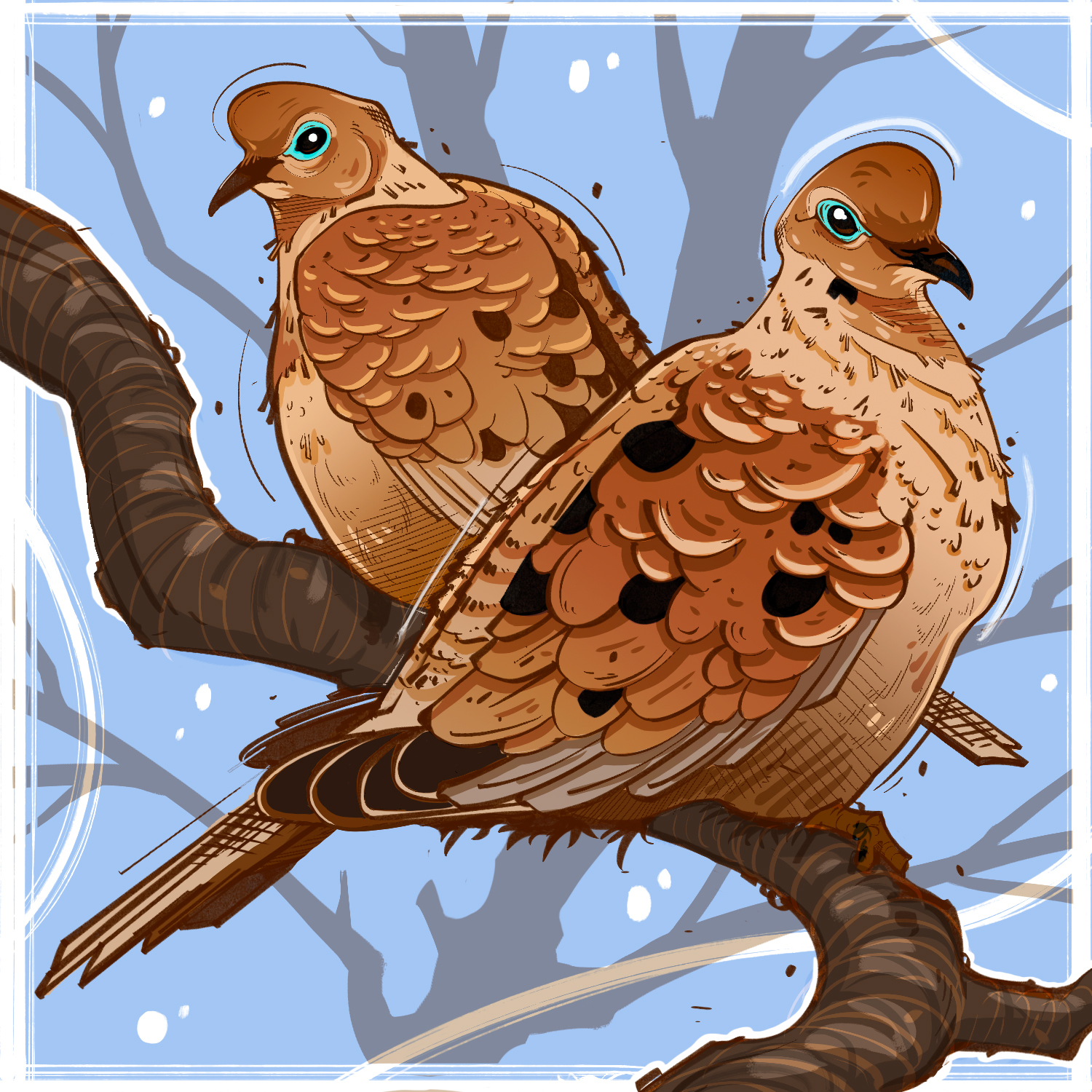For many people, a pigeon is a messy, sometimes noisy urban bird that fouls buildings and statues, whereas a dove is a noble bird that symbolizes peace and love. But, in fact, “pigeon” and “dove” are simply common names for members of the Columbidae family of birds and, although “pigeon” is often the label of the larger species, the names are used interchangeably.
Advertisement

This group has a couple of interesting characteristics that set them apart from most other bird species. For one, they don’t need to tip their head up to swallow water, but they can slurp it up and swallow with their head down and beak in a puddle. Also, they are the only birds to produce pigeon milk, a rich, fatty, but nutritious secretion from the lining of the crop of adult pigeons of both sexes. Newly hatched squabs (pigeon chicks) live exclusively on this milk for the first week of life, before gradually switching to an adult diet of seeds, other plant matter and insects.
Pigeons have had a long association with humans and accompanied our ancestors to colonize the globe together. There are about 300 pigeon and dove species found worldwide and these birds are so adaptable that only the Sahara Desert and the north and south polar regions are pigeon-free. BC hosts four of these species: band-tailed pigeons and mourning doves are native, while Eurasian collared doves and rock doves are non-native aliens.
Advertisement
Band-tailed pigeons (Patagioenas fasciata) can be found in southwestern BC, mostly the Lower Mainland and southern Vancouver Island. In BC, they are mostly associated with wet coastal forests, but there are at least eight subspecies and some find suitable habitat as far inland as eastern Colorado and as far south as Argentina. At about 350 grams, band-tailed pigeons are large members of the Columbidae. They have a grey-blue back and purplish-grey belly and a small but distinctive patch of iridescent green feathers with a white band on the back of their neck. There is a hunting season for band-tailed pigeons in parts of BC, but hunter interest is not high, recent harvests have been fewer than 100 birds annually.
Mourning doves (Zeneida macroura) are about half the weight of band-tailed pigeons. They have a mostly grey back with black spots on the wings and a pink or peach-coloured breast. At the time of European colonization, mourning doves lived primarily in the southern half of North America. However, with the habitat changes that came with European settlement, and a high reproductive potential (up to six broods of two to three young annually), mourning doves are now the most common and widespread game bird on the continent. The mourning dove population in the US is estimated at 350 million, and approximately 20 million are harvested annually by hunting. These birds are not common in BC and not nearly as popular with BC hunters. The estimated hunter harvest 1976 to 1982 found an average of about 1,800 birds taken annually. In 2020, there is a short season for mourning doves in some BC regions, but the harvest is no longer being tracked.
Advertisement
Eurasian collared doves (Streptopelia decaocto) are a relatively recent arrival in BC, but in the past 40 years have colonized almost the entire province. They are most commonly found in the south half of the province, but there are breeding records from as far north as the Yukon border. This bird is slightly larger than a mourning dove, almost uniformly pale grey but with a black half collar on the back or their neck. They have recently been added to the BC Hunting Regulations and are included in the season and bag limit for mourning doves.
The last of BC’s pigeons is the most common and widely known: the rock dove, or common pigeon or rock pigeon or even just pigeon (Columbia livia). These birds have been associated with humans for many thousands of years. Probably domesticated in what is now Iraq, they were introduced around the globe by humans, and thrived. Modern cities and farms provide habitats that few other bird species are as able to exploit. However, in some situations these birds are considered pests. In the BC Wildlife Act, rock doves are listed under schedule C, meaning they “can be captured or killed anywhere and at any time” and without a hunting licence.
Love them or curse them, pigeons and doves are an interesting group of BC game birds.